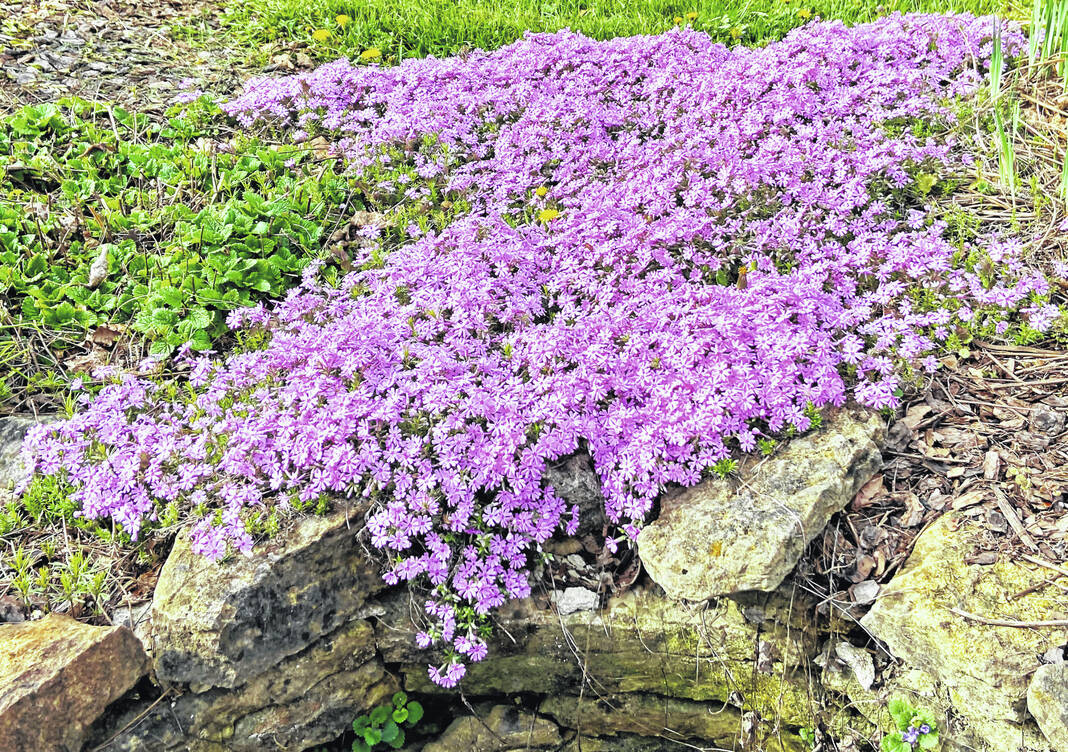
This showy ground cover of creeping Phlox likely started with just one healthy plant.
Submitted photo

One of the first signs of spring is the colorful billows of creeping phlox in light blue, white and all shades of pink, creeping along rock gardens and slopes. Creeping phlox is a hardy, dependable groundcover plant that is widely used to suppress weeds on hard-to-mow slopes.
Creeping phlox is an evergreen, making it ideal as a dense groundcover and for draping over walls and stones. phlox prefers moist, well-drained soils but it’s very adaptable and forgiving. You can create a healthy carpet of phlox by simply working some Plant Tone and peat into the soil in your planting hole and then mulching heavily around the area. The plant will spread and take root in the mulch, gradually expanding the clump until it covers a wide area.
Gardeners typically look for “flats” or multiple packs of small phlox plants when they want to use it for groundcover. This is actually not the best way to get a healthy stand quickly. It’s much more effective to plant a single large plant, preferably a gallon pot full of roots. The mature root system will encourage the plant to quickly spread up to three feet in a single season, with dense thick foliage that smothers and discourages weeds underneath.
A big, healthy root system is the key to success. When planting, treat that pot full of roots they way you would a shrub or small tree. Dig a wide hole for it, mix fertilizer and peat, and mulch heavily. You’ll be surprised how soon you have a huge carpet of showy flowers that gets larger every spring.
You can further encourage spreading by trimming the plant back during the fall or winter months. Lifting the edges of the clump, trim around the edges, cutting off the part that hasn’t rooted yet, one-third of even half of the total plant. Sprinkle a cup or two of balanced fertilizer (Espoma Plant Tone or Flower Tone works well) around the plant.
Generous mulching is the secret to getting creeping phlox to spread quickly, and suppressing weds in the meantime until the phlox is thick enough to create total shade under it. Creeping phlox roots quickly in soft mulch, but not nearly as fast in hard ground. Using a nourishing mulch like pine bark or composted hardwood definitely helps; dead mulches like Cypress don’t feed the plant nearly as well.
Dividing phlox too soon will slow down and stunt the plants. Working compost and fertilizer into the surrounding soil is much more effective. Regular feeding helps, too.
Steve Boehme is a landscape designer/installer specializing in landscape “makeovers”. “Let’s Grow” is published weekly; column archives are online at www.goodseedfarm.com. For more information call GoodSeed Farm Landscapes at (937) 587-7021.

